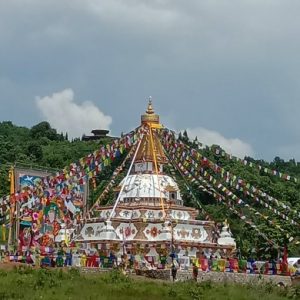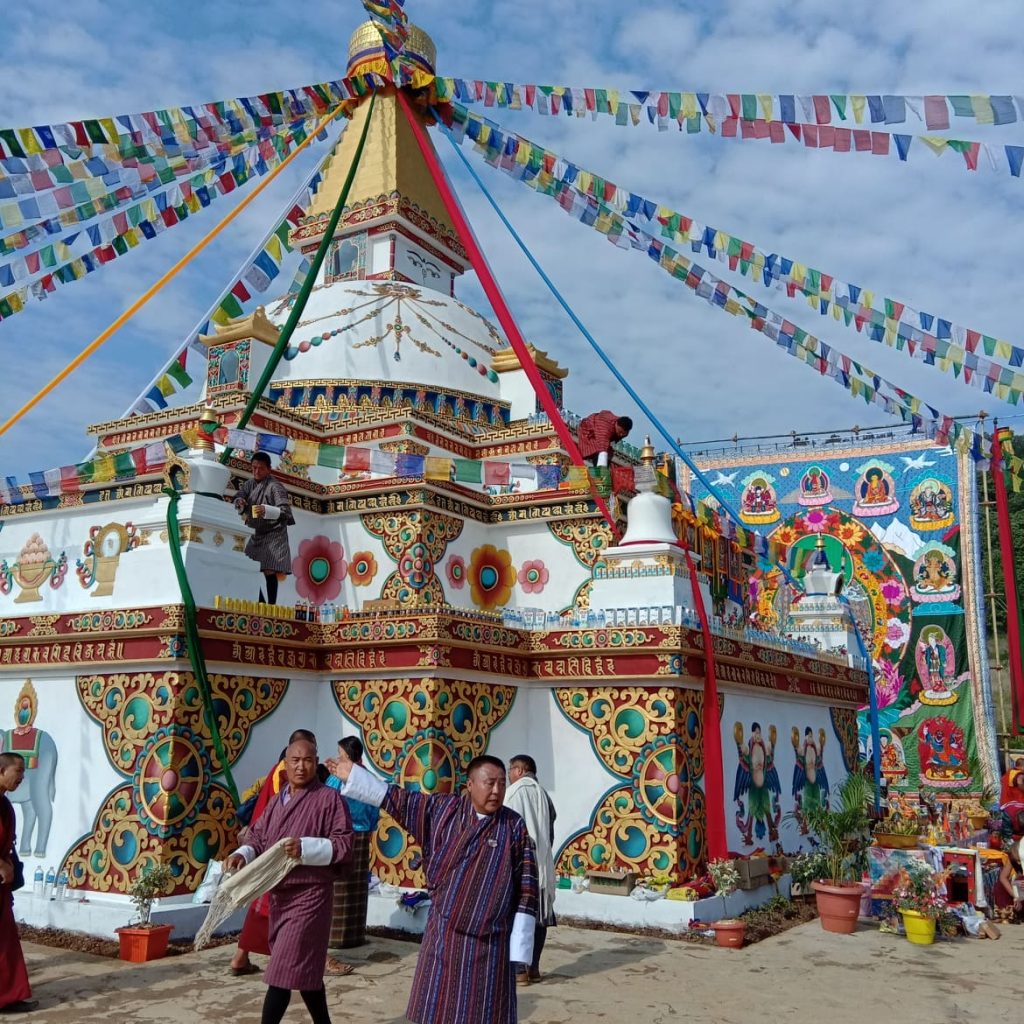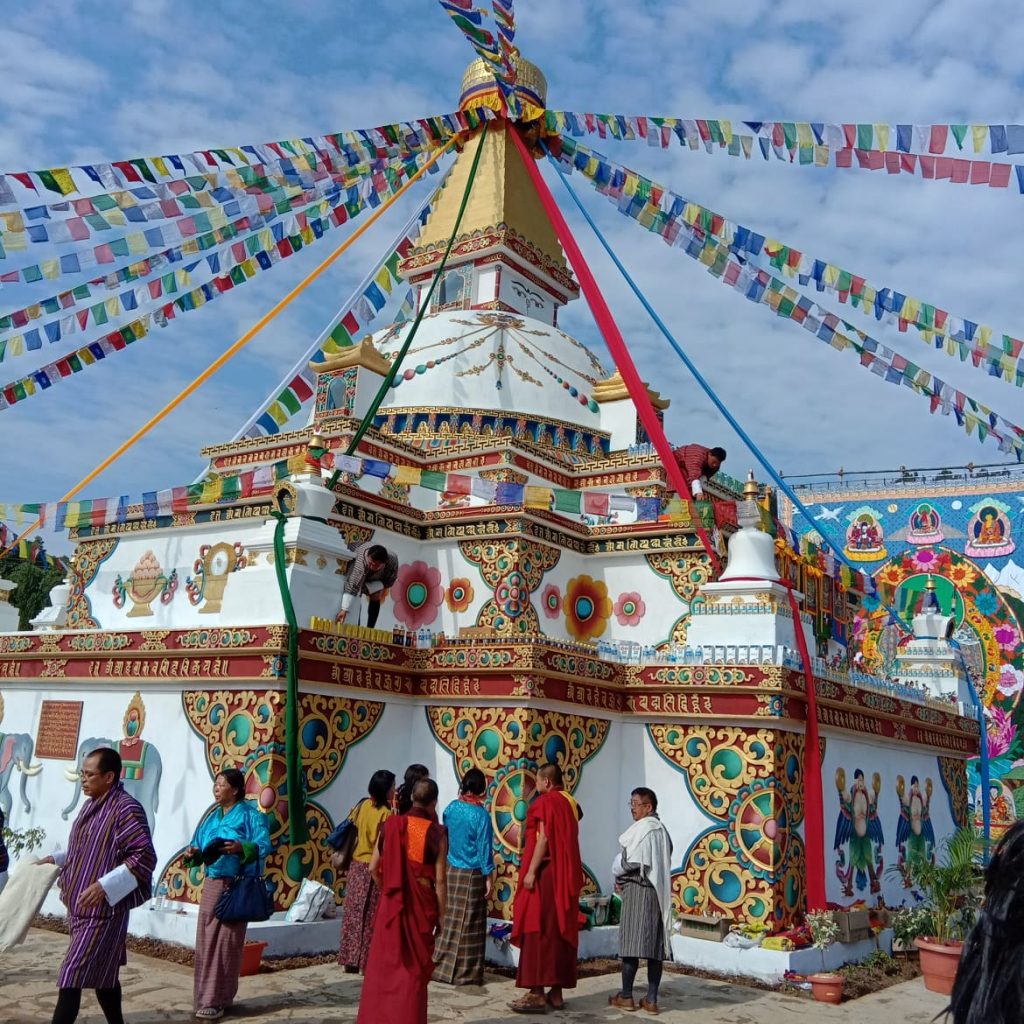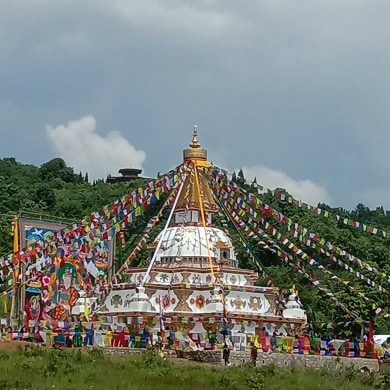 The Nepali version of Buddhism is penetrating in Bhutan in an apparent effort of the Bhutanese government to tighten the grip on the Hindus and to ward off the growing influence of Vishwa Hindu Federation.
The Nepali version of Buddhism is penetrating in Bhutan in an apparent effort of the Bhutanese government to tighten the grip on the Hindus and to ward off the growing influence of Vishwa Hindu Federation.
On 12 June 2019, a chaitya resembling Swayambhunath of Kathmandu valley was inaugurated in Damphu which is a heart of the Hindu culture and civilization in Bhutan. Hindu religion which is also linked to the Nepali language in Bhutan was for a couple of decades symbolised an anti-current entity of Drukpa-Buddhist bravado. His Holiness Je Khenpo Jigme Choedra, the head of the Buddhism in Bhutan, inaugurated the monastery. It was attended by the officers and people of Chirang district.
In Bhutan, there has been a constant state pressure on minority Hindus to adopt Buddhism. The first session of the national assembly of Bhutan in 1953 had resolved to convert all the Bhutanese people who spoke Nepali and followed Hinduism into Dzongkha speaking and Buddhism following citizens. The states’ continuous effort led to an expulsion of unmalleable citizens into exile, in the 1990s. Thereafter the remaining Bhutanese population took up the Dzongkha language and soon became more proficient than the native speakers. The imposition of religion was not that easy. Decades of exercises, rules, policies, and lures to metamorphose the Hindus to Buddhists failed.
The people rather resorted to Christianity for freedom of worship. No church exists in Bhutan. The constitution does not allow the acceptance of a religion that was not in practice in the country for the last fifty years. Christianity falls in that category. The number of Christian converts has grown tremendously. In the International Nepali Speaking Christian Pastors’ Conference held in Kathmandu last March, at least one hundred Bhutanese pastors were present. It was mentioned in the program that there are fifty to sixty thousand Jesus worshipers in Bhutan. They have no Church but there are no legal hassles congregating in private houses.
The royal government of Bhutan (RGoB) is promoting Nepali Buddhism among its non-Drukpa population. Nepal is a good example where Hindus and Buddhists co-exist as one. The Hindus and Buddhists are almost inseparable in terms of acceptance of gods and worship. The distinguishing features between the two religions are respected rather than differentiated. The replicate of Swayambhunath in Damphu is named Namgay Khangzang Chorten. A stupa made from rocks and stones usually has such a name. The RGoB’s effort to promote Nepali Buddhism is to prevent the ongoing conversion into Christianity.
The Bibles in Nepali, Dzongkha, English, Tsangla, Rai, Tamang languages are smuggled into Bhutan from across the border. The literatures on Christianity are read and shared among the believers, enthusiasts, and well-wishers.
Nepali Buddhism is an age old practice in Bhutan and several Nepalese architectures have added the decor in the country’s panorama. Until the mid of nineteenth century, Drukpa Lama from Bhutan used to be the Head of the Swayambhunath temple in Kathmandu, like the South Indian Priest in the Pashupatinath. During the Nepal-Tibet War in 1855-56, the Drukpa rulers chose to remain neutral. The Nepalese rulers mistook the Drukpa ruler’s neutrality as a support to the Tibetans and scrapped the Drukpa Lama’s top position from the Swayambhunath. However, the Indian priests continue to head the Pashupatinath worship.
Even earlier, when the Muslim invaders attacked Kathmandu Valley and demolished the temples and monasteries, the monk escaped from Nepal with a map of the Baudhanath Chaitya and reached Bhutan. The Baudhanath Chaitya was replicated in two places in Bhutan- Chorten-kora at Tashiyangtse in Eastern Bhutan and Chain Devi Chaitya at Tongsa in Central Bhutan. Otherwise, the Buddhism practiced in Bhutan has the roots in Tibetan Buddhism which was the derivative of Buddhism prevalent in India between fifth and eighth century.
The RGoB must have cracked an idea that the Hindus of Bhutan of Nepalese descent can be converted to Buddhism if the Nepali Buddhism is enforced on them. Whether the Bhutanese embrace Nepali Buddhism or not, the beautiful Swayambhunath replica with drooping Buddha eyes looking at the hills and valleys in Hindu dominated region of Bhutan is a great asset in the region’s tourism development.


